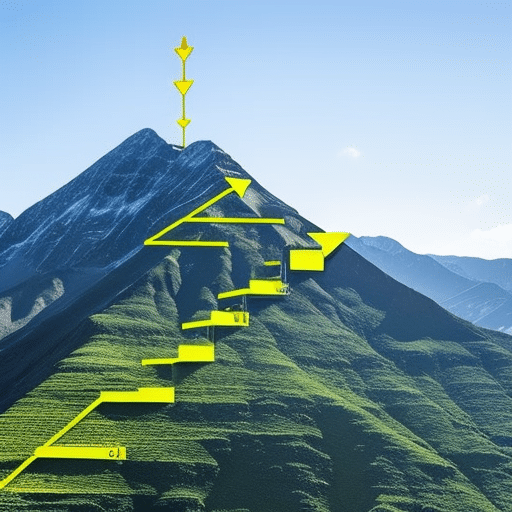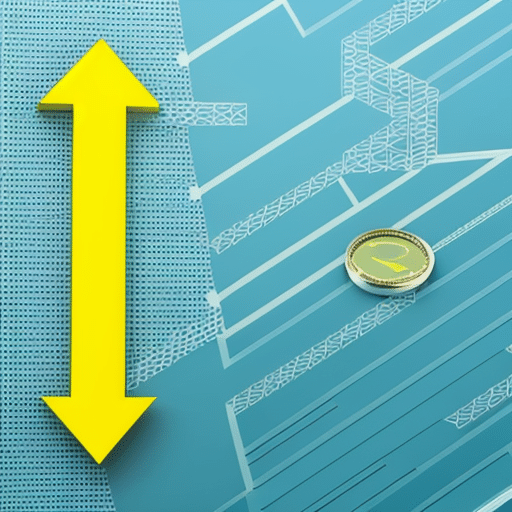Best DAO Platforms for Token Governance in 2026
DAO tools now manage over $18 billion in assets. This number keeps growing. DAOs have evolved from experiments to managing real treasuries and impacting thousands.
I’ve spent nights exploring voting interfaces and watching proposals unfold. Sometimes my votes didn’t count. Other times, communities made brilliant choices through effective Web3 governance systems.
This guide shares my hands-on experience with these platforms. I’ll reveal the good, the messy, and the surprisingly effective aspects I’ve encountered.
We’ll examine data from protocols like ElevateFi, which uses multi-sig safeguards. We’ll explore treasury management, on-chain analytics, and quorum requirements. These are field notes from someone who’s participated in actual governance votes.
Key Takeaways
- Modern DAO infrastructure now manages over $18 billion in decentralized assets with real voting mechanisms
- Multi-sig governance and circuit breakers provide essential security layers for treasury protection
- Quorum requirements and timelock execution prevent rushed decision-making in protocol changes
- On-chain analytics offer transparent visibility into proposal outcomes and community participation
- Practical experience reveals significant differences between whitepaper promises and actual platform usability
- Community-driven proposals require careful balance between accessibility and security measures
Introduction to DAO Platforms
DAOs aren’t digital boardrooms. They’re new ways to organize people and money for shared goals. These platforms change how we think about structure.
Participants shape financial ecosystems directly. This is happening now across hundreds of platforms. Community-owned protocols are a big shift in organizational thinking.
Understanding Decentralized Autonomous Organizations
Smart contracts are the core of DAOs. They encode all rules. Token holders propose, the community votes, and passed proposals execute automatically.
No CEO or board can override or delay decisions. My first DAO vote on Compound was eye-opening. My tokens had real power.
ElevateFi is a current example. They’ve built decentralized infrastructure with non-custodial staking vaults. Their DAO governs with strict quorum and timelock rules.
These safeguards are built into the code. You can’t rush a vote to drain the treasury overnight.
“The real innovation isn’t the technology—it’s that we’ve created systems where no single party can act unilaterally, yet decisions still get made efficiently.”
Blockchain governance varies, but token-weighted voting is common. More tokens mean more say. Some use quadratic voting to prevent whale dominance.
Others argue those with most at stake should have more influence. The debate continues.
| Governance Aspect | Traditional Organizations | DAO Platforms | Key Advantage |
|---|---|---|---|
| Decision Authority | Board of Directors, C-Suite | Token holders via on-chain voting | Distributed power structure |
| Transparency | Quarterly reports, limited disclosure | Every transaction visible on blockchain | Complete financial visibility |
| Execution Speed | Days to months for approvals | Timelock delays (typically 24-72 hours) | Faster implementation with safeguards |
| Proposal Process | Internal channels, restricted access | Open submission by any token holder | Democratic access to governance |
The Rise of Token Governance in DAOs
DAO governance has evolved since 2020. Now we see multi-stage processes with temperature checks and detailed proposals. It’s become a genuine governance framework.
DAOs manage billions in treasuries. MakerDAO oversees collateral for DAI stablecoin. Compound and Aave make daily risk decisions affecting user funds.
These are serious financial infrastructures now. DAOs often handle crises faster than traditional companies. The community is ready, and execution is automated.
Modern governance includes safeguards like timelocks and multisig requirements. Proposals wait before execution, allowing time to spot issues. This reflects lessons from past failures.
Real-world asset integration is pushing governance further. DAOs managing tokenized real estate need robust dispute resolution and insurance. Some use specialized committees or expert voting systems.
Participation rates vary widely. Some DAOs see 5-10% voter turnout, others 40-50%. Engagement depends on voters feeling their voice matters.
The human element is crucial. A perfect governance system fails if the community doesn’t use it.
Key Features of Effective DAO Platforms
Three core features determine a DAO platform’s success: voting, security, and daily usability. These elements separate platforms people use from those they abandon.
The best platforms solve real problems in coordinating token holders. They manage different technical knowledge levels and competing interests effectively.
Voting Mechanisms That Actually Work
Token-weighted voting can let whales override others’ preferences. Top crypto voting platforms offer multiple options beyond simple one-token-one-vote systems.
Quadratic voting reduces large holders’ influence. It scales voting power with the square root of tokens held. This creates a more balanced power distribution.
Delegation systems allow specialized participation. I delegate my voting power to experts in specific areas. This ensures informed decisions across various topics.
Time locks are crucial for safety. They delay proposal execution after passing. This gives dissenters time to exit, preventing sudden governance attacks.
Quorum requirements ensure broad participation in decisions. They set minimum thresholds for vote validity. This prevents a tiny minority from making major changes.
| Voting Mechanism | Power Distribution | Complexity Level | Best Use Case |
|---|---|---|---|
| Token-Weighted | Linear with holdings | Simple | Small, aligned communities |
| Quadratic Voting | Square root scaling | Moderate | Reducing whale influence |
| Delegation | Assigned by voters | Moderate | Expert-driven decisions |
| Multi-Sig | Equal among signers | Simple | Emergency actions |
Transparency and Security Features
Transparent treasury management is essential. I only use platforms with real-time fund tracking. DAO treasury management software should show every transaction and decision clearly.
ElevateFi uses policy guards with multi-sig governance. This prevents single-person control over major treasury movements. Multiple trusted parties must approve significant actions.
Circuit breakers pause operations during unusual events. They protect DAOs from flash loan attacks and oracle manipulation. This feature has prevented catastrophic losses.
Slippage caps protect value during trades. They ensure swaps execute within acceptable price ranges. This prevents order book manipulation and value extraction from the treasury.
Oracle-verified pricing is vital for on-chain governance frameworks. It prevents artificial price movements that could trigger profitable actions for attackers.
Proof-of-reserves attestations confirm asset existence. They verify that claimed balances match actual on-chain amounts. This prevents misrepresentation of treasury holdings.
User Experience Makes or Breaks Adoption
A good interface is crucial for DAO participation. Confusing platforms drive users away, regardless of their technical excellence. The best systems respect users’ time and intelligence.
Clear proposal summaries are essential. They should provide key information without requiring extensive technical knowledge.
- Executive summary in plain language
- Financial impact breakdown
- Technical changes explained simply
- Arguments for and against
- Timeline and execution details
Integrated discussion forums create space for pre-vote debate. They allow community members to share thoughts and raise concerns. This ensures important context isn’t lost in scattered channels.
Simple voting interfaces reduce friction. The best DAO treasury management software makes voting as easy as clicking a button. This encourages higher participation rates.
Notification systems keep users engaged without overwhelming them. Timely alerts for new proposals and voting deadlines ensure no important decisions are missed.
Built-in educational guides help newcomers participate effectively. They lower entry barriers and increase overall participation rates. This creates more inclusive governance systems.
Combining robust voting, transparent security, and user-friendly design increases participation dramatically. These elements work together to create engaging, effective governance systems.
Top DAO Platforms for Token Governance in 2026
Four platforms have shaped my thinking on blockchain governance solutions. These systems manage real assets and affect thousands of people. I’ve participated in their governance or studied their processes extensively.
These platforms have survived market crashes and handled contentious votes. They’ve evolved based on real-world feedback. Each offers a unique approach to collective decision-making by token holders.
MakerDAO: The Pioneer of DeFi Governance
MakerDAO has managed the DAI stablecoin system since 2017. Their MKR token gives voting rights on stability fees and collateral assets. They’ve built an entire ecosystem around decision-making.
MakerDAO’s governance process seriously structures their decision-making. They use delegates, working groups, and a formal proposal process. This system proved effective during the 2022 market crash.
When Terra collapsed, MakerDAO’s governance kept DAI stable. They adjusted parameters and added new collateral types without panic. This shows their system works under pressure.
The strength of a DAO lies not in its technology alone, but in the wisdom of its collective decision-making process.
Voter turnout isn’t perfect, with only 5-10% of MKR tokens participating. However, those who vote tend to be well-informed. This beats having uninformed voters making critical decisions about billions in assets.
Compound: Autonomous Execution in Action
Compound’s COMP token controls interest rate models and collateral assets. Their key feature: once a proposal passes, it automatically executes on-chain. No human intervention is needed.
I voted on a proposal to add new collateral in 2024. Watching it pass and execute without manual intervention was remarkable. This represents true decentralization.
Compound’s governance forum is where real work happens. People debate proposals and build consensus before voting. They’ve also built effective delegation tools that don’t require giving up tokens.
Aave: Sophisticated Risk Management
Aave has significantly evolved their governance system. They created a tiered system where proposals require different quorum levels based on risk. This approach makes sense for varying decision impacts.
Aave’s community-driven multi-chain expansion stands out. Token holders voted on strategic chain choices, asset support, and treasury allocation. This demonstrates collective intelligence in action.
Their governance isn’t afraid to experiment. They’ve tested various voting mechanisms and adjusted proposal thresholds. This adaptability matters more than getting everything perfect initially.
Aragon: Building Your Own DAO
Aragon provides infrastructure for creating DAOs. It offers templates, voting modules, and treasury management tools. I helped set up a small DAO using Aragon last year.
Aragon’s modular approach allows customized governance structures. They offer quadratic voting and time-locked execution modules. This flexibility makes Aragon a practical blockchain governance solution for new projects.
The platform operates on Polygon, keeping transaction costs low. This choice shows Aragon understands the practical realities of frequent voting in governance systems.
| Platform | Primary Token | Key Feature | Best Use Case |
|---|---|---|---|
| MakerDAO | MKR | Structured ecosystem with delegates | Large-scale DeFi protocols |
| Compound | COMP | Autonomous on-chain execution | Lending protocols requiring frequent parameter updates |
| Aave | AAVE | Tiered risk-based proposal system | Multi-chain protocols with complex risk profiles |
| Aragon | ANT | Modular DAO creation platform | New projects building custom governance |
These platforms show what’s possible in decentralized governance. MakerDAO offers maturity and stability. Compound demonstrates true autonomous execution. Aave proves governance can evolve and adapt.
Each platform solves the governance problem differently. There’s no single perfect system. Choose the platform that matches your specific requirements and constraints.
Statistical Insights on DAO Platforms
DAO metrics reveal transformative growth in Web3 governance systems. These systems are reshaping how organizations operate. Recent weeks saw $3.17 billion in net inflows to digital asset investment products.
Year-to-date inflow hit a record $48.7 billion. The total cryptocurrency market cap surpassed $4 trillion. This creates a foundation for unprecedented DAO expansion.
These numbers represent millions choosing decentralized governance over traditional structures. People are embracing a new way of organizational management.
Growth Trends in DAO Adoption
DAO adoption since 2020 has been exponential. We’ve gone from a dozen significant DAOs to thousands of active community-owned protocols.
DAO treasuries collectively held over $20 billion at their peak. This number fluctuates with market conditions. However, the overall trend points upward consistently.
Governance token holders have grown from thousands to millions. This shift shows a new perspective on organizational membership.
Active DAOs increased from 20 platforms in 2020 to 6,000 registered organizations by 2024. This expansion proves the model’s appeal in the crypto space.
Community-owned protocols now manage billions in assets under decentralized governance. MakerDAO’s treasury alone consistently holds over $8 billion in assets.
Token Governance Impact on Decision Making
Governance votes determine protocol direction in meaningful ways. Tokenized decision-making produces real outcomes across major platforms.
MakerDAO has processed thousands of executive votes changing critical protocol parameters. Compound has approved dozens of new asset listings through governance votes.
Voter participation rates typically range from 5-15% of token holders. This is higher than most corporate shareholder votes, which often see single-digit participation.
High-stakes decisions get better turnout, often pushing participation above 25%. Routine adjustments struggle to break 10%. Community-owned protocols can execute votes in 3-7 days when needed.
Comparative Analysis of User Engagement
Platforms with delegation features show higher effective participation. Compound and Aave saw improved engagement after implementing delegation systems.
User experience significantly impacts voter retention. Web3 governance systems with cleaner interfaces and better documentation keep more active voters.
Proposal pass rates vary depending on pre-vote vetting processes. Some DAOs see 90% of proposals pass due to robust discussion phases.
| Platform | Average Voter Participation | Proposal Pass Rate | Delegation Feature | Active Proposals (Monthly) |
|---|---|---|---|---|
| MakerDAO | 8-12% | 85% | Yes | 15-20 |
| Compound | 5-9% | 78% | Yes | 8-12 |
| Aave | 10-15% | 82% | Yes | 10-15 |
| Aragon | 6-11% | 73% | Partial | 12-18 |
Platforms with better UX and delegation features maintain higher engagement over time. Even the best-performing DAOs struggle to engage more than 15% of token holders.
Participation rates are improving. Early DAOs saw 2-3% participation. Modern platforms consistently hit 10%+ participation. This shows real progress.
Quality of participation matters as much as quantity. Platforms where active voters represent significant holdings can make legitimate decisions even with modest turnout.
Predictions for DAO Platforms in 2026
The blockchain governance space is set for major changes by 2026. Predicting crypto’s future is tricky, but clear patterns are emerging. We’re on the brink of a significant shift in decentralized organization operations.
Developer talks and data suggest big changes ahead. This isn’t just hype, but a real evolution in how DAOs work and grow.
Projected Market Growth
Current DAO treasury numbers paint an exciting picture. By late 2026, DAOs could manage over $50 billion in assets. This growth shows a big change in capital coordination.
Institutional investors are warming up to decentralized governance models. Investment flows that seemed impossible three years ago are now happening.
By 2026, 3-5 major organizations might try DAO or hybrid structures. The best platforms will make this switch easy. Cooperatives and decentralized science projects are already showing signs.
Here’s what the market might look like:
- Total DAO treasury value: $50+ billion by Q4 2026
- Active DAOs: Growth from current ~5,000 to 15,000+ organizations
- Institutional participation: 20-30% of major investment firms exploring DAO governance
- Hybrid organizational models: 3-5 Fortune 500 companies testing decentralized structures
- Regulatory clarity: At least 15 countries establishing clear DAO legal frameworks
Top platforms will solve participation issues. This means better gamification, working reputation systems, and user-friendly delegation tools.
Evolving User Demographics
Current DAO users are crypto-savvy and tech-comfortable. But this is changing faster than most realize.
Traditional finance pros, academics, activists, and local government coordinators are getting interested. They see governance tech as a coordination tool, not an ideology.
By 2026, DAO voters will be less tech-focused but more outcome-driven. They’ll care about decisions, not smart contract details. This shift will push platforms to simplify their interfaces.
As regulations clear up, we’ll see broader participation. Here’s what this means:
- Age diversification: Current average age of ~32 expanding to include 45+ cohorts
- Geographic expansion: Participation shifting from 70% North America/Europe to truly global representation
- Professional backgrounds: Less “blockchain developer” and more “community organizer,” “financial analyst,” “legal coordinator”
- Technical literacy: Platforms will need to accommodate users who’ve never used MetaMask
The best 2026 DAO platforms will welcome new users, not overwhelm them. User experience will matter more than technical complexity.
Potential Technological Advancements
Upcoming tech changes are reshaping on-chain governance frameworks. Cross-chain governance is coming fast. Soon, you’ll vote on one chain and affect treasuries on others.
Imagine coordinating actions across Ethereum, Polygon, and Arbitrum with one proposal. That’s 2026. Cross-chain messaging will boost capital mobility and governance.
Here are my tech advancement predictions:
| Technology | Current State | 2026 Prediction | Impact on Governance |
|---|---|---|---|
| Cross-chain voting | Experimental implementations | Standard feature on major platforms | Unified governance across multiple chains |
| Privacy-preserving votes | Research phase | Production-ready with zk-proofs | Eliminates strategic voting manipulation |
| AI proposal analysis | Basic summarization tools | Sophisticated outcome prediction models | Better informed decision-making |
| Reputation systems | Simple token-weighting | Multi-dimensional reputation scoring | Rewards consistent, quality participation |
By 2026, advanced voting mechanisms will be standard. This includes conviction voting, futarchy experiments, and reputation-weighted systems.
Privacy is a key focus. Zero-knowledge proofs could enable private voting while maintaining verifiability. This will change governance dynamics significantly.
AI integration is coming too. Tools will analyze proposals, predict outcomes, and draft governance proposals. This might sound far-fetched, but it’s realistic given recent innovation.
The best 2026 blockchain governance solutions will make complex tech feel simple. Great tech should be invisible – it just works.
Tools for Effective Token Governance
The right tools can make or break your DAO’s effectiveness. Good infrastructure leads to smooth operations. Poor choices result in constant headaches.
These tools form the foundation of your community’s decision-making process. They protect assets and allow for growth over time.
Smart Contract Frameworks
Smart contracts turn governance theory into reality. The best frameworks use modular designs for easy customization. This approach allows for flexibility without starting from scratch.
ElevateFi’s method is noteworthy. They’ve created building blocks for various functions. These can be combined to suit your DAO’s specific needs.
Modularity is crucial. It allows for easy adjustments to voting periods or quorum requirements. You’re not rewriting core code, just reconfiguring tested modules.
OpenZeppelin’s Governor contracts are widely used in serious projects. They offer tested code for the entire governance cycle. This includes proposals, voting, and execution with timelocks.
Mature frameworks include important safety features by default. These protect your DAO from potential threats.
- Multi-sig governance for sensitive operations that could affect treasury or protocol parameters
- Circuit breakers that automatically pause the system if suspicious activity is detected
- Adjustable quorum requirements that can scale with community size
- Timelock delays that give the community time to react before major changes execute
When choosing a platform, ask about their smart contract framework. Check if it’s been professionally audited. Trusted frameworks are open-source and widely used.
Compound’s Governor Bravo, Aave’s governance contracts, and Aragon’s frameworks are reliable options. These have proven their worth in real-world situations.
The best governance infrastructure is invisible to users but resilient under pressure—it should handle edge cases gracefully while making common operations simple.
Governance Tokens and Their Utility
Governance tokens serve multiple purposes beyond voting rights. The best tokens offer a range of utilities.
Well-designed governance tokens typically include these features:
| Token Utility | Governance Function | Economic Alignment |
|---|---|---|
| Staking for Rewards | Demonstrates long-term commitment | Earns yield, reduces circulating supply |
| Voting on Proposals | Direct democratic participation | Influences protocol direction and value |
| Delegation Rights | Enables expert participation | Maintains governance power while outsourcing time |
| Treasury Access | Controls protocol resources | Value capture through fees or buybacks |
ElevateFi’s token implementation showcases these features in action. Their tokens serve multiple functions within the governance system.
Look for DAO treasury management software with integrated tools. These should handle the full governance lifecycle. Real-time treasury dashboards are essential.
User-friendly interfaces are crucial. Proposal creation tools should be step-by-step. Voting interfaces need clear explanations to avoid confusion.
Delegation systems are important too. You should be able to delegate and reclaim voting power easily. The best tools make this process quick and reversible.
Forum integrations are vital for pre-vote discussions. Snapshot, Tally, and Boardroom are popular tools among serious governance participants.
Top platforms offer APIs for third-party tool development. This fosters innovation beyond the core team’s roadmap.
Currently, multiple governance platforms exist with different tools. A unified interface for multi-DAO participation is needed. Until then, learning various systems is necessary for effective governance.
Case Studies of Successful DAO Implementations
Real-world examples show how tokenized decision-making works in practice. Three major community-owned protocols offer valuable lessons in blockchain governance solutions. Their experiences reveal what succeeds under pressure.
These platforms use different approaches to decentralized decision-making. Their governance structures are tailored to their specific needs and communities. Token holders shape protocol direction through transparent, on-chain processes.
How MakerDAO Governs the DAI Stablecoin System
MakerDAO runs a highly studied governance system for the DAI stablecoin protocol. They manage crucial parameters like stability fees and collateral ratios. Billions of dollars depend on their decisions.
MakerDAO’s structured governance cycle includes weekly community polls. These gauge support for proposed changes without direct execution. Executive votes follow, modifying the protocol’s smart contracts.
MakerDAO uses continuous approval voting to prevent brief takeover attacks. The leading proposal stays active until a new one surpasses it. This system protects against harmful changes from temporary control.
During crises, MakerDAO’s governance has responded swiftly to prevent system collapse. They’ve made controversial decisions, sparking intense community debates. These include adding centralized stablecoins as collateral.
Governance can be slow, but deliberation matters for high-stakes decisions. MakerDAO’s delegate system boosted participation rates. MKR holders can now delegate voting power to active community members.
Governance is not about speed. It’s about legitimacy and collective wisdom guiding protocols through uncertainty.
Compound’s Streamlined Autonomous Proposal System
Compound uses a streamlined approach to tokenized decision-making. Their autonomous proposal system executes automatically after passing votes. There’s no manual intervention or admin keys involved.
The process starts with a proposal, requiring a minimum COMP token threshold. Community members then debate on the forum. On-chain voting follows for three days.
Passed proposals enter a two-day timelock before automatic execution. This delay allows users to exit if they disagree. The system is fully transparent, with all votes recorded on-chain.
Compound faces challenges with token concentration. Large holders and VC firms control significant voting power. This raises questions about the true decentralization of their decisions.
What Aave’s Multi-Chain Expansion Teaches About Adaptability
Aave’s governance has evolved through multiple versions, each improving on the last. They now use a sophisticated system with different proposal types. Higher-impact decisions require greater participation.
Aave’s governance enabled their successful multi-chain expansion. The community voted to deploy on networks like Polygon and Avalanche. These decisions involved complex evaluations of security, demand, and resources.
Community discussions for these proposals showcase high-quality discourse. Members analyze market data and debate strategic positioning. This demonstrates that decentralized communities can make complex, technical decisions collectively.
| Platform | Governance Cycle | Vote Execution | Key Strength | Primary Challenge |
|---|---|---|---|---|
| MakerDAO | Weekly polls + Executive votes | Continuous approval voting | Crisis response capability | Slow deliberation process |
| Compound | Forum discussion + 3-day vote | Automatic after timelock | Complete automation | Token concentration concerns |
| Aave | Risk-tiered proposals | Variable quorum requirements | Multi-chain adaptability | Governance complexity |
These implementations offer different models for blockchain governance solutions. Each system balances speed, safety, simplicity, and decentralization. Successful platforms openly acknowledge these tradeoffs.
Real-world evidence matters more than theory. These protocols manage billions in value through tokenized decision-making. While not perfect, their governance systems work effectively.
FAQs About DAO Platforms and Token Governance
These questions often come up in the DAO space. I’ll share insights from my experience with crypto voting platforms. Some answers remain unclear, but I’ll explain what I’ve learned through active participation.
Web3 governance systems can be complex. New terms, processes, and evolving tech can be confusing. Let’s break down common questions about how these platforms work.
What is a DAO?
A DAO is a decentralized autonomous organization. It uses smart contracts for rules and lets token holders make decisions. There’s no CEO or board of directors in charge.
Token holders vote on everything from budgets to strategy. I’ve been in DAOs managing thousands to billions of dollars. The “autonomous” part is a bit misleading, though.
DAOs aren’t robots making decisions. They’re people using decentralized autonomous organization tools. Smart contracts execute decisions, but humans drive the process. No single person has full control—at least in theory.
In reality, DAOs vary in decentralization. Some have thousands of active participants. Others have a small group of large token holders controlling decisions. At least it’s transparent on-chain.
How do token governance mechanisms work?
First, someone creates a proposal. It could be a technical change, spending request, or strategic decision. The proposal is posted for community discussion, sometimes lasting weeks.
If there’s enough support, it moves to a formal vote. Voting power usually matches token holdings. This is both a strength and weakness of token governance.
Votes typically last 3-7 days. Proposals need to reach quorum and get majority approval. Some systems automatically execute on-chain after a timelock period.
Other platforms use manual execution by a multi-sig group. Some allow delegation, where you assign voting power to someone else. I delegate in several DAOs to active, thoughtful voters.
Some platforms experiment with different voting methods. These include quadratic voting, conviction voting, and rage-quitting. Each aims to improve fairness and participation.
Are DAOs compliant with regulations?
The answer varies and is uncertain. DAO regulations are evolving and differ by location. In the US, the SEC suggests many governance tokens may be securities.
This could subject DAOs to complex securities regulations. Wyoming has created a legal framework for DAOs. Some form as cooperatives or foundations for legal clarity.
DAOs often don’t fit existing legal categories. Who’s liable for regulatory violations? Are token holders shareholders? Are developers responsible for community actions? Courts are working this out now.
My advice: understand the regulatory risks. Many DAOs work with lawyers on legal structures and compliance. Check if a DAO addresses these issues before joining.
Being “decentralized” doesn’t make something immune to regulation. The best platforms will balance decentralization and compliance, even if it means some compromises.
| DAO Aspect | How It Works | Common Challenge | Practical Solution |
|---|---|---|---|
| Token-Based Voting | One token equals one vote in most systems | Whale dominance and low participation | Delegation and quadratic voting mechanisms |
| Proposal Process | Community submits ideas for formal voting | Low-quality or spam proposals | Minimum token threshold and discussion periods |
| Legal Structure | Varies from informal to registered entities | Regulatory uncertainty across jurisdictions | Foundation wrapping or cooperative models |
| Execution Method | On-chain automatic or multi-sig manual | Security risks and execution delays | Timelock contracts and trusted multi-sig groups |
Challenges and Limitations of DAO Platforms
DAOs face major hurdles like legal confusion, low participation, and technical barriers. These problems prevent Web3 governance systems from reaching their full potential. Successful platforms address these issues head-on.
Let’s explore the main challenges I’ve seen firsthand. Some may improve over time. Others might be inherent to tokenized decision-making and require ongoing management.
Legal Uncertainties
Regulatory ambiguity is the biggest issue for DAOs. Most jurisdictions lack clear legal frameworks for these organizations. This creates serious risks for everyone involved.
Regulators are taking notice. The SEC has charged DAOs with securities violations. The CFTC claims jurisdiction over DeFi protocols using DAO governance.
European regulations may soon require DAOs to have legal representatives. This goes against the idea of decentralized governance.
Some projects spend huge sums on legal structures for on-chain governance frameworks. Common approaches include:
- Creating foundations in Switzerland or the Cayman Islands
- Establishing limited liability companies in Wyoming
- Implementing progressive decentralization roadmaps
- Maintaining centralized entities alongside DAO structures
Liability concerns keep big investors away. It’s unclear if token holders could be sued. This uncertainty prevents serious capital from participating.
Even legal teams struggle to give clear guidance on DAO structures. Regulatory clarity is needed for mainstream adoption.
Voter Apathy and Participation Rates
Low participation plagues tokenized decision-making. Most DAO proposals get only 5-15% of eligible tokens voting. Some votes see less than 1% participation.
Several factors contribute to this consistently low turnout:
- Most token holders bought for profit, not governance rights
- Reading proposals takes significant time
- Individual votes rarely change outcomes
- Technical complexity scares casual participants
- Gas fees make voting costly for small holders
As a result, small groups make most decisions. Large token holders, active delegates, and core teams control supposedly decentralized organizations.
This isn’t always bad. These groups often have the most expertise. But it raises questions about true decentralization.
| Challenge Category | Average Impact | Typical Participation Rate | Primary Barrier |
|---|---|---|---|
| Legal Uncertainty | High risk deterrent | N/A | Regulatory ambiguity |
| Voter Apathy | Governance centralization | 5-15% token participation | Rational ignorance |
| Technical Barriers | Excludes casual users | 2-8% active voters | Complexity and cost |
| Proposal Complexity | Informed decision difficulty | 10-20% full review | Domain expertise required |
Some DAOs try to boost participation. They offer token rewards or use delegation. These help somewhat but don’t solve the core problem.
Delegation has become a practical solution. Token holders assign voting power to active community members. This concentrates decision-making but maintains accountability.
On-chain governance frameworks face other challenges too. Technical barriers remain high. You need a wallet, tokens, and know-how just to vote.
Most proposals require expert knowledge. Average token holders can’t make informed decisions on complex protocol changes.
Governance attacks are a real threat. Someone could buy tokens to push through bad proposals. Front-running occurs when large holders sway outcomes last-minute.
Smart contract risks are concerning. Bugs in governance contracts have been exploited before. Vulnerabilities could allow vote manipulation or fund draining.
Successful DAOs design around these limitations. They use timelocks, quorum requirements, and multi-signature safeguards.
The challenges are real and persistent. Anyone involved in DAOs should understand these limitations. The technology is powerful but imperfect.
Awareness of these issues is growing. Newer platforms learn from past failures. Legal frameworks are developing. Participation incentives are improving.
These challenges will likely persist for years. They’re not just technical problems. They involve human behavior, legal systems, and collective decision-making.
Future of DAO Platforms and Token Governance
Blockchain governance solutions are evolving rapidly. We’ve seen experimental protocols grow into billion-dollar treasuries managed through decentralized votes. This growth signals a transformative shift in how organizations operate.
The pace of innovation is astonishing. Small-scale experiments are becoming mainstream features faster than expected. Current innovations in smaller DAOs will likely shape the landscape by 2026-2027.
Innovations on the Horizon
Cross-chain governance tops the list of upcoming advancements. Most DAOs currently exist in isolated blockchain ecosystems, limiting their reach. But this is changing quickly.
Picture a DAO controlling assets across multiple chains at once. It could manage ETH, stablecoins, and NFTs on different networks simultaneously. A single proposal could trigger actions across all these chains.
This technology exists through protocols like LayerZero and Axelar. Integration is the next step. Cross-chain capability will unlock new possibilities for tokenized decision-making.
AI-assisted governance is becoming a reality. AI tools could summarize long proposals and model economic impacts of decisions. They might also identify coordinated voting or conflicts of interest.
The best systems will use AI to augment human decision-making, not replace it. It’s like having a super-smart assistant that never sleeps.
Privacy-preserving voting through zero-knowledge proofs could solve key issues. Current systems make all votes public, leading to bandwagon effects and vote buying. ZK-proofs allow secret ballots while ensuring votes are valid.
Several projects are testing this approach. It may become standard in sophisticated community-owned protocols within a few years.
Improved participation mechanisms are crucial to fight voter apathy. Exciting alternatives to simple token-weighted voting are emerging:
- Conviction voting where committing tokens longer to a proposal increases your vote weight, signaling genuine confidence
- Futarchy where communities vote on desired outcomes but prediction markets determine the methods
- Liquid democracy allowing direct voting on some issues while delegating expertise on others
These systems balance expertise, engagement, and decentralization better. They recognize that not everyone can vote on every issue, but all should have a voice.
These governance advances, like those in revolutionizing blockchain technology, represent fundamental shifts in decentralized systems.
Integration with Traditional Organizations
The integration of DAOs with traditional structures could greatly expand adoption. Early signs show convergence between conventional organizations and blockchain governance solutions.
Hybrid models are emerging where companies use DAO tools for specific functions. These might include employee equity voting or transparent treasury management.
By 2026, we may see several major developments:
- Corporate experimentation with major companies using DAO structures for subsidiaries or specific projects
- Non-profit adoption of DAO tools for transparent governance and stakeholder engagement
- Municipal pilots using tokenized voting for participatory budgeting in forward-thinking cities
- Investment funds creating DAO structures that give investors direct governance rights
Regulations will shape this integration. As governments establish clearer frameworks, compliant DAO structures will likely emerge. This might include KYC requirements or specific legal classifications.
By 2030, “DAO” might not be a niche term. It could be how many organizations choose to operate, from startups to governments.
The challenge will be balancing decentralization with accessibility and legal compliance. Winning platforms will combine cutting-edge tech with practical usability.
Traditional organizations bring resources and legitimacy. Community-owned protocols offer transparency and aligned incentives. Their fusion represents an exciting frontier in organizational design.
Conclusion: The Path Forward for DAOs
The DAO landscape shifts rapidly. Token governance platforms are ongoing experiments in large-scale human coordination. These systems blend technical achievements with behavioral insights.
What We’ve Learned From Leading Platforms
MakerDAO, Compound, Aave, and Aragon have proven decentralized governance can manage billions in assets. They’ve shown communities can make complex decisions without centralized control.
However, challenges persist. Low voter turnout, legal uncertainties, and balancing speed with security remain ongoing issues.
DAO treasury management software has evolved significantly in recent years. Today’s tools address real problems faced by early adopters.
Moving Forward With Realistic Expectations
Start small. Join an established DAO before creating your own. Vote on proposals and experience the process firsthand.
These platforms work, but they need patience and active involvement. Expect to encounter some friction points.
The future may involve hybrid models. These systems could blend decentralized governance with practical compliance solutions.
Not every decision needs to be on-chain. Traditional structures still make sense in some cases.
I’m watching closely to see which approaches succeed. The path forward is realistic and evolving.







 Bitcoin
Bitcoin  Ethereum
Ethereum  Tether
Tether  XRP
XRP  USDC
USDC  Lido Staked Ether
Lido Staked Ether  TRON
TRON  Dogecoin
Dogecoin  Cardano
Cardano  Figure Heloc
Figure Heloc  WhiteBIT Coin
WhiteBIT Coin  Wrapped stETH
Wrapped stETH  Bitcoin Cash
Bitcoin Cash  Wrapped Bitcoin
Wrapped Bitcoin  USDS
USDS  Chainlink
Chainlink  Wrapped eETH
Wrapped eETH  Binance Bridged USDT (BNB Smart Chain)
Binance Bridged USDT (BNB Smart Chain)  LEO Token
LEO Token  WETH
WETH  Hyperliquid
Hyperliquid  Stellar
Stellar  Monero
Monero  Zcash
Zcash  Ethena USDe
Ethena USDe  Coinbase Wrapped BTC
Coinbase Wrapped BTC  Litecoin
Litecoin  Sui
Sui  Avalanche
Avalanche  Hedera
Hedera  Shiba Inu
Shiba Inu  sUSDS
sUSDS  USDT0
USDT0  Dai
Dai  Mantle
Mantle  PayPal USD
PayPal USD  Toncoin
Toncoin  World Liberty Financial
World Liberty Financial  Cronos
Cronos  Ethena Staked USDe
Ethena Staked USDe  Uniswap
Uniswap  Polkadot
Polkadot  MemeCore
MemeCore  Aave
Aave  Bittensor
Bittensor  USD1
USD1  Rain
Rain  Canton
Canton